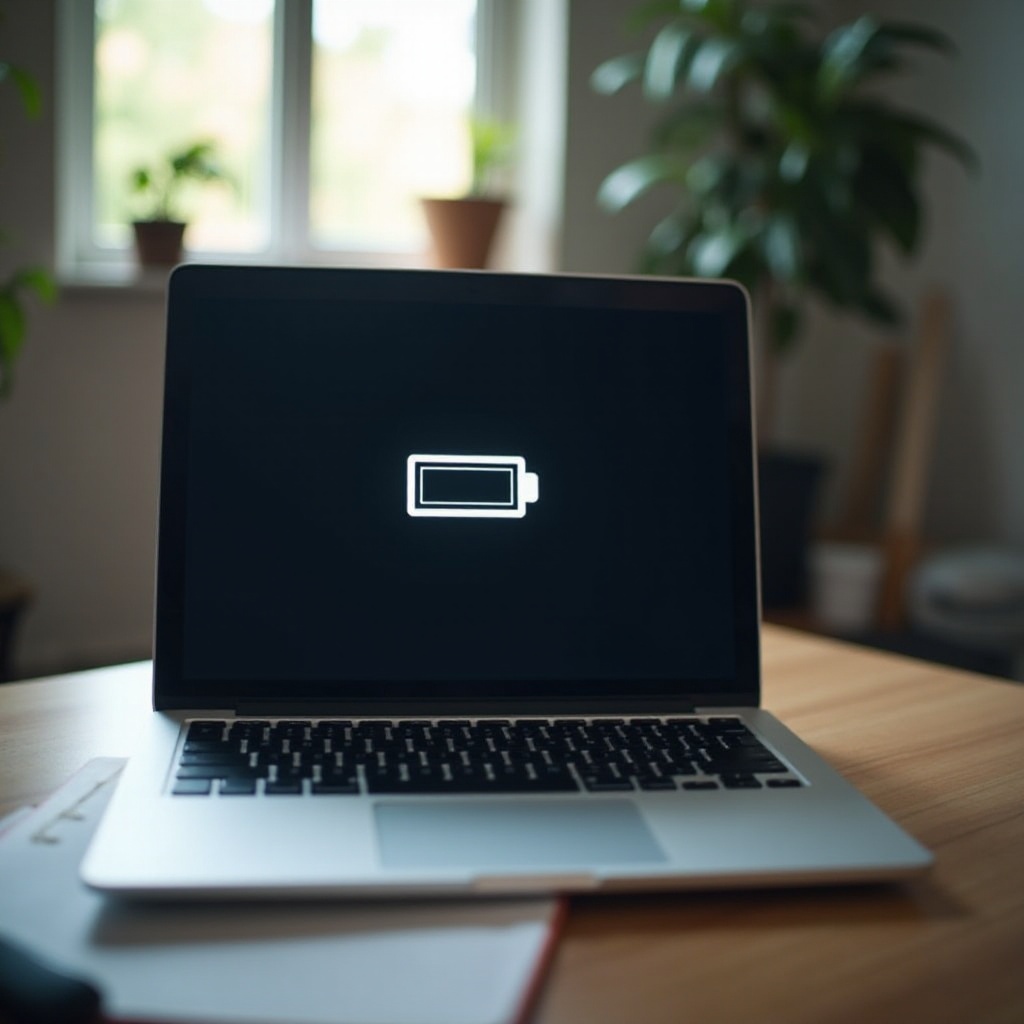Introduction
Laptops offer unmatched convenience, powered by an efficient battery. A functional battery is crucial for uninterrupted work, travel productivity, and extended on-the-go sessions. However, signs of a malfunctioning battery can be subtle until a significant issue arises. This article delves into understanding the basics of laptop batteries, identifying common signs of battery failure, and exploring diagnostic tools and methods to help you maintain your laptop’s efficiency.

Understanding Laptop Battery Basics
The inner workings of a laptop battery are fascinating and intricate. Most modern laptops use lithium-ion (Li-ion) or lithium-polymer (Li-poly) batteries. These batteries offer a high energy density, a slow discharge rate, and long life with proper care.
Understanding the battery’s cycle count is crucial for predicting its lifespan. A cycle count is defined as the process of using and recharging 100% of your battery’s capacity, even if it spans multiple partial recharges. Most batteries are designed to last between 300 to 500 cycles before experiencing significant wear or loss of capacity.
Knowing about battery design and functionality can help diagnose potential issues, providing insights into how batteries degrade over time and the maintenance necessary to ensure longevity.
Common Signs of a Failing Laptop Battery
If your laptop battery isn’t performing as expected, you might notice several symptoms. Being aware of these signs can help address issues promptly.
Sudden Shutdowns or Restarts
Sudden shutdowns can be disruptive, particularly if you’re in the middle of important work. If your laptop powers off abruptly despite indicating sufficient battery life, this is a red flag. This could be due to battery cells not holding a charge or internal battery sensors malfunctioning.
Inconsistent Battery Percentage Readings
Inaccurate or fluctuating battery percentage readings can be frustrating. You might see your laptop showing 80% charge and then dropping to 50% within minutes. This inconsistency reflects a problem within the battery management system or the battery itself, affecting accurate energy storage assessment.
Reduced Battery Life and Runtime
Over time, significantly shorter battery life between charges is common. If your laptop previously lasted for 5 hours on a full charge but now dies within 2 hours under the same conditions, the battery’s capacity has likely diminished significantly. Battery degradation can come from factors including age, charging habits, and usage intensity.
Understanding these signs is crucial for maintaining your laptop’s efficiency. The next step is employing diagnostic tools and methods to confirm your battery’s condition.

Diagnostic Tools and Methods
Verifying your laptop’s battery health can be done using various tools and methods, ensuring accurate diagnostics.
Using Built-in System Diagnostics (Windows, macOS)
Both Windows and macOS have built-in diagnostics to assess battery health. Windows users can generate a battery report by running the powercfg /batteryreport command in Command Prompt. This report provides detailed insights into battery performance, usage history, and health. On macOS, users can check battery health by holding the Option key and clicking the battery icon to view the ‘Condition’ status—‘Normal,’ ‘Replace Soon,’ ‘Replace Now,’ or ‘Service Battery.’
Third-Party Battery Health Testing Software
Several third-party applications offer more granular diagnostics for battery health. Tools like BatteryInfoView, HWMonitor, and CoconutBattery (for Mac users) provide comprehensive details on the battery’s charge capacity, voltage, temperature, cycle count, and wear level. Utilizing these tools can supplement built-in diagnostic reports, offering a clearer picture of battery health.
Checking the Battery’s Physical Condition
Visual inspection of the battery can also reveal potential issues. Look for signs of swelling, leakage, or physical damage. Swollen batteries pose a safety risk and require immediate replacement. Physical damage can impair the battery’s ability to hold a charge and function correctly.
Through these diagnostics, you can confirm whether the battery needs attention, leading to troubleshooting steps and temporary fixes to prolong its life.
Troubleshooting and Temporary Fixes
Implementing some troubleshooting steps and temporary fixes can help manage battery issues before opting for a replacement.
Calibrating Your Laptop Battery
Battery calibration can help re-sync the battery’s meter with its actual charge level. To calibrate, fully charge your laptop, then unplug and use it until it completely drains and shuts down. Reconnect the charger and fully recharge it without interruption. Repeat this process monthly to maintain calibration.
Managing Software Processes and Power Settings
Reducing the load on your system can help extend battery life. Close unnecessary applications, adjust power settings to lower consumption, and disable power-hungry features like Bluetooth and high screen brightness. Utilizing battery saver modes available in your operating system can optimize power usage and prolong battery life.
Using an External Battery Charger
If your built-in battery is failing and you’re not ready to replace it, an external battery charger can be a temporary solution. These external chargers can power your laptop directly or provide additional battery life.
These steps can help maintain battery functionality temporarily. Still, recognizing when to replace the battery is crucial to ensure your laptop performs optimally without risking hardware damage.

When to Replace Your Laptop Battery
Deciding when to replace your laptop battery involves considering several factors including age, cycle count, and cost-effectiveness.
Age and Cycle Count Considerations
Over time, batteries lose their ability to hold a charge effectively. If the battery is over two years old or has surpassed its rated cycle count, it’s a strong indicator that a replacement is due. Checking the manufacturer’s specifications for expected cycle counts can help determine if your battery has reached its end-of-life.
Cost vs. Performance Analysis
When evaluating the need for replacement, consider the cost versus the performance benefits. Replacing the battery can restore the laptop’s portability and efficiency. However, if the replacement cost is high or the laptop is too old, investing in a new laptop might be more cost-effective.
With this knowledge, making an informed decision about battery replacement becomes clearer, ensuring your laptop remains a reliable tool for daily use.
Conclusion
Understanding how to identify and diagnose a failing laptop battery is crucial for maintaining the performance and longevity of your device. By recognizing common signs, using available diagnostic tools, applying troubleshooting methods, and knowing when replacement is due, you can ensure your laptop remains functional and efficient.
Frequently Asked Questions
How can I extend the lifespan of my laptop battery?
Regular calibration, managing power settings, avoiding high temperatures, and minimizing full discharges can help extend battery lifespan.
Are third-party replacement batteries reliable?
Some third-party batteries are reliable, but always purchase from reputable sources and ensure compatibility with your laptop model.
Can a bad laptop battery damage my laptop?
While a failing battery might not directly damage your laptop, it can cause unexpected shutdowns and system instability. It’s best to replace it promptly.

